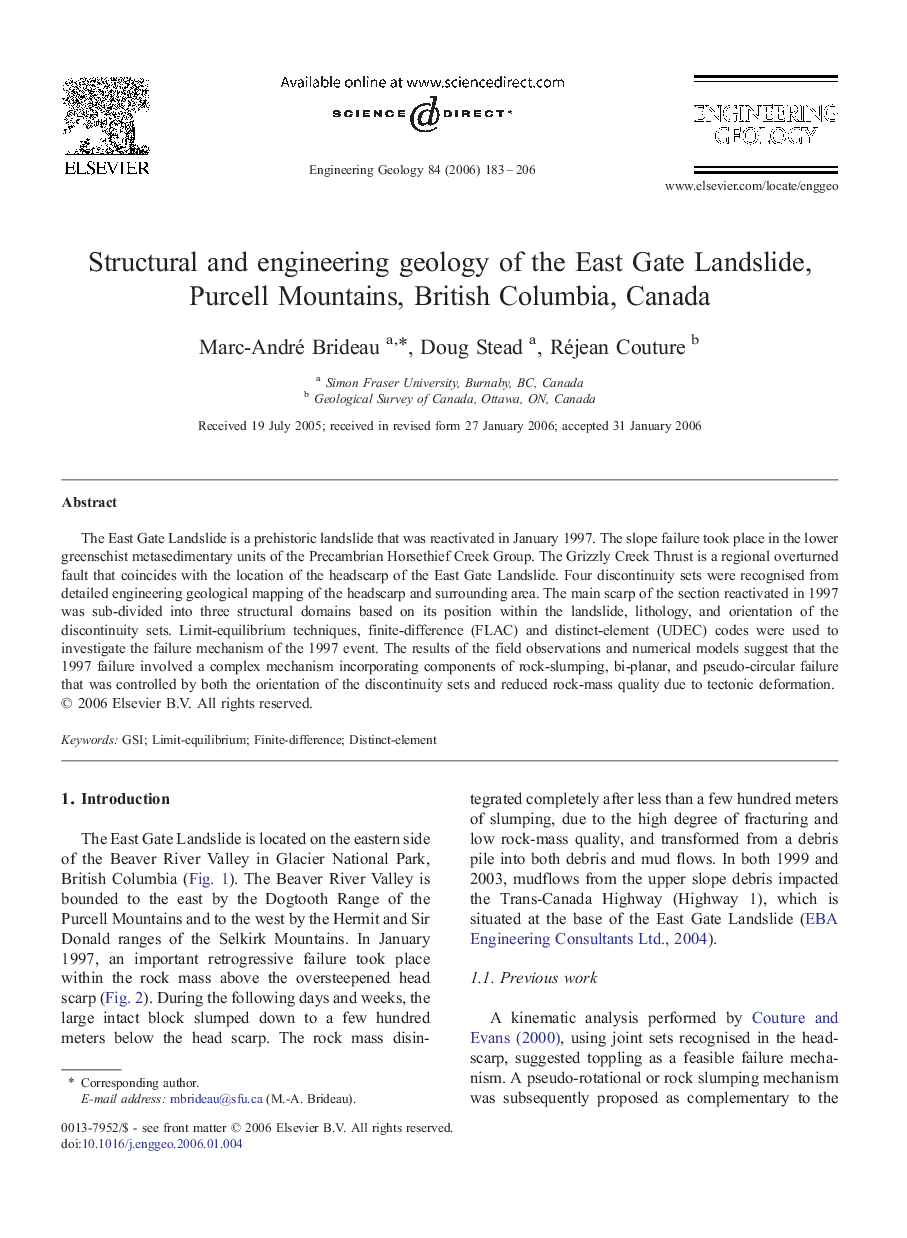| Article ID | Journal | Published Year | Pages | File Type |
|---|---|---|---|---|
| 4745169 | Engineering Geology | 2006 | 24 Pages |
The East Gate Landslide is a prehistoric landslide that was reactivated in January 1997. The slope failure took place in the lower greenschist metasedimentary units of the Precambrian Horsethief Creek Group. The Grizzly Creek Thrust is a regional overturned fault that coincides with the location of the headscarp of the East Gate Landslide. Four discontinuity sets were recognised from detailed engineering geological mapping of the headscarp and surrounding area. The main scarp of the section reactivated in 1997 was sub-divided into three structural domains based on its position within the landslide, lithology, and orientation of the discontinuity sets. Limit-equilibrium techniques, finite-difference (FLAC) and distinct-element (UDEC) codes were used to investigate the failure mechanism of the 1997 event. The results of the field observations and numerical models suggest that the 1997 failure involved a complex mechanism incorporating components of rock-slumping, bi-planar, and pseudo-circular failure that was controlled by both the orientation of the discontinuity sets and reduced rock-mass quality due to tectonic deformation.
